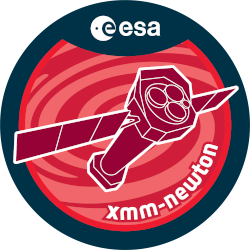

| Proposal ID | 015062 |
| Title | XMM-Newton Observations of the DLS Shear-Selected Cluster Survey |
| Download Data Associated to the proposal | https://nxsa.esac.esa.int/nxsa-sl/servlet/data-action-aio?obsno=0150620101 |
| DOI | https://doi.org/10.5270/esa-vyv1759 |
| Principal Investigator, PI | Prof John P. Hughes |
| Abstract | We propose XMM-Newton observations of the 8 most massive clusterscurrently identified from the Deep Lens Survey (DLS). The DLSmass-selected cluster sample makes it possible for the first time tostudy clusters in a baryon-independent way. XMM-Newton observationswill meet multiple high-impact scientific goals, specifically, testingthe fair sample hypothesis, calibrating the relationships betweencluster mass and X-ray luminosity and temperature, and studying theevolution of these relationships with look-back time. |
| Publications |
|
| Instrument | EMOS1, EMOS2, EPN, OM, RGS1, RGS2 |
| Temporal Coverage | 2003-04-22T11:57:49Z/2003-11-22T17:37:51Z |
| Version | 17.56_20190403_1200 |
| Mission Description | The European Space Agencys (ESA) X-ray Multi-Mirror Mission (XMM-Newton) was launched by an Ariane 504 on December 10th 1999. XMM-Newton is ESAs second cornerstone of the Horizon 2000 Science Programme. It carries 3 high throughput X-ray telescopes with an unprecedented effective area, and an optical monitor, the first flown on a X-ray observatory. The large collecting area and ability to make long uninterrupted exposures provide highly sensitive observations. Since Earths atmosphere blocks out all X-rays, only a telescope in space can detect and study celestial X-ray sources. The XMM-Newton mission is helping scientists to solve a number of cosmic mysteries, ranging from the enigmatic black holes to the origins of the Universe itself. Observing time on XMM-Newton is being made available to the scientific community, applying for observational periods on a competitive basis. |
| Creator Contact | https://www.cosmos.esa.int/web/xmm-newton/xmm-newton-helpdesk |
| Date Published | 2005-02-20T00:00:00Z |
| Last Update | 2025-08-04 |
| Keywords | "XMM", "dls mass", "xray luminosity", "XMM-Newton", "cluster survey", "impact scientific", "dls shear", "massive cluster", "xmm newton", "meet multiple", "cluster mass", "cluster sample makes" |
| Publisher And Registrant | European Space Agency |
| Credit Guidelines | European Space Agency, Prof John P. Hughes, 2005, 'XMM-Newton Observations of the DLS Shear-Selected Cluster Survey', 17.56_20190403_1200, European Space Agency, https://doi.org/10.5270/esa-vyv1759 |